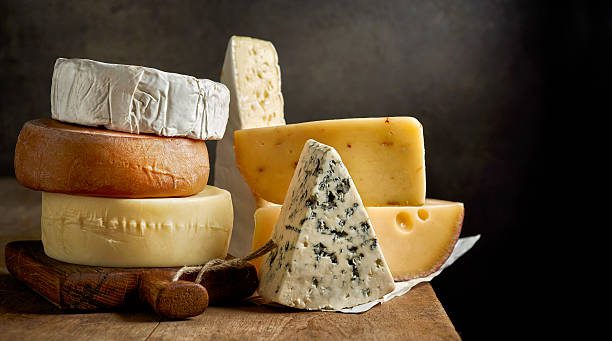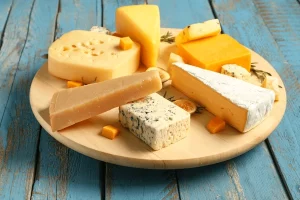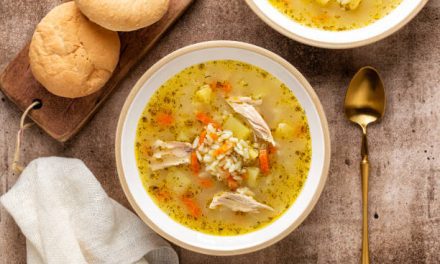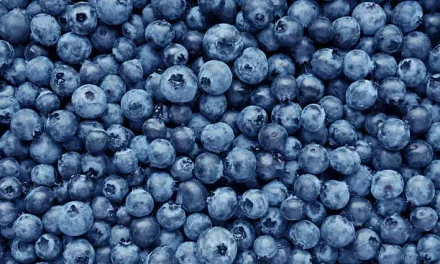Cultured, Creamy, Timeless
Cheese is one of humanity’s oldest success stories in food—portable milk, preserved by microbes and time, shaped by animal breeds, weather, pasture, and craft. From prehistoric accident to global icon, cheese marries simple ingredients (milk, salt, cultures, rennet) into astonishing variety. This article covers where cheese came from, how it’s made, why cows matter (and what they eat), and the health upsides that make cheese a rewarding part of a thoughtful diet.
A brisk walk through history
Archaeology suggests people were separating curds and whey at least 7,000 years ago in what is now Poland; perforated clay sieves found there appear to be cheese strainers. The “origin story” many tell imagines milk stored in a traveler’s pouch made from a ruminant’s stomach: natural rennet in the lining curdled the milk during a hot journey, yielding a pleasantly tangy curd. Whether or not that legend is literal, early herders in the Fertile Crescent, the Mediterranean, and Central Asia learned quickly that curdling and drying milk solved multiple problems: it lasted longer without refrigeration, it was easier to transport, and it let lactose-sensitive adults enjoy dairy with fewer digestive issues.
Ancient Greeks and Romans categorized cheeses by texture and age. Monasteries in medieval Europe refined techniques—think Alpine wheels and bloomy rinds—both for revenue and self-sufficiency. By the time global trade expanded, cheese had branched into families: pliant, buttery tommes; elastic “pasta filata” cheeses like mozzarella; blue-veined marvels seeded with Penicillium; cooked-curd hard cheeses tough enough for long travel and grating over stews or pasta. Industrialization brought consistency and scale, but artisan traditions never died; they evolved, often circling back to raw-milk and farmhouse practices that honor local terroir.
How milk becomes cheese
Although styles differ, most cheeses follow a shared arc:
- Milk selection and standardization
Cheese starts with high-quality milk—cow, goat, sheep, or buffalo—tested for fat, protein, and microbial counts. Some cheesemakers standardize fat-to-protein ratios for consistent texture; others let seasonal swings express themselves in the final flavor. - Culturing
Lactic acid bacteria (starter cultures) are added to ferment milk sugar (lactose) into lactic acid. This lowers pH, setting the stage for coagulation and flavor formation. Adjunct cultures might be added for specific effects—thermophiles for high-temperature cooking (Parmesan/Grana), mesophiles for moderate temperatures (Cheddar), surface-ripening yeasts and molds for bries and washed rinds. - Coagulation
Rennet (animal, microbial, or fermentation-derived chymosin) cuts casein micelles so they knit into a gel. Acid-set cheeses (paneer, queso blanco) use acid rather than rennet, yielding different textures. - Cutting and stirring
The curd is cut into cubes; smaller pieces expel whey faster and lead to drier, firmer cheese. Stirring, resting, and “cooking” (raising temperature) control moisture and the curd’s final structure. - Draining and cheddaring or stretching
Drained curds may be cheddared (stacked slabs knit and acidify further, then milled and salted) for Cheddar’s signature body, or stretched in hot whey/water (pasta filata) for mozzarella’s layered elasticity. Other styles simply ladle delicate curd into molds to retain moisture and softness. - Salting
Salt seasons, firms texture via osmotic action, regulates microbes, and aids rind development. It can be mixed into curds, dry-rubbed, or delivered via brine baths. - Ripening (affinage)
Temperature, humidity, airflow, and washing schedules sculpt flavor and rind. Bloomy rinds (Camembert, brie) ripen outside-in; blues ripen from within; Alpine wheels adopt nutty, brothy notes as enzymes break proteins and fats over months; very hard cheeses can age years, concentrating umami.
Each variable—milk chemistry, cultures, cut size, cook temperature, salting, humidity—nudges the final cheese toward supple, crumbly, oozy, elastic, or crystalline. That’s why “cheese” can mean a cloud-like chèvre, a squeak of curd, or a flinty shard of a three-year Parmesan that tastes like roasted nuts and bouillon.
Why cows matter (a lot)
Even before cultures and cellars do their work, the cow sets the stage. Breed, lactation stage, health, and stress level influence milk composition—especially casein variants, butterfat percentage, and fat globule size. A few quick hits:
- Breeds and butterfat
Jerseys and Guernseys often yield richer milk than Holsteins, thanks to higher butterfat and beta-carotene, which can lend a golden hue. Brown Swiss are prized in Alpine regions for steady protein and fat ratios ideal for cooked-curd cheeses. - Casein genetics
Variants like kappa-casein B can improve curd firmness and yield. Some cheesemakers selectively source milk with favorable casein profiles for style consistency. - Stress and milking rhythm
Comfortable, low-stress cows produce milk with more predictable fat/protein ratios and fewer off-flavors. Milking intervals affect fat content (longer gaps can mean richer fat).
In short: great cheese starts as great milk, and great milk starts with genetics, animal welfare, and calm, consistent routines.
What cows eat—and why it changes flavor
If “you are what you eat” is true for people, it’s doubly true for dairy animals. Feed shapes the milk’s fatty acid profile, aroma precursors, micronutrients, and seasonal character.
- Pasture vs. total mixed ration (TMR)
Grass-fed cows eating diverse pasture plants (clovers, herbs, ryegrasses) typically produce milk higher in omega-3s and conjugated linoleic acid (CLA) and rich in volatile compounds that translate into grassy, floral, or herbaceous notes. TMR diets (corn silage, alfalfa, grains) deliver consistency and high yields; they can produce clean, sweet milk but may lack some of the wild aromatics of diverse pasture. - Seasonality
Spring pasture is tender and carotenoid-rich, often deepening color and fresh-cut-grass aromas in spring/summer cheeses. Winter rations yield paler, more neutral milk—handy for styles that emphasize subtlety or long aging. - Herbage diversity
Meadows with yarrow, plantain, sainfoin, and alpine herbs yield nuanced flavors. These botanicals add terpenes and phenolic compounds that survive cheesemaking and ripening, contributing to signature regional profiles. - Silage quality
Properly fermented, sweet silage maintains milk cleanliness; poorly made silage risks butyric or barny off-notes, which can disrupt delicate styles. - Minerals and water
Trace minerals (from soil and water) influence microbial populations and enzyme activity during ripening. Even the dairy’s water source (used in brines and washing) subtly tilts rind development.
Bottom line: the most vivid, expressive cheeses usually come from farms where feed is managed for diversity and freshness, or where a consistent, high-quality ration is matched to the style being produced. Feed isn’t just “fuel”—it’s flavor architecture.
Health benefits that deserve attention
Cheese’s reputation swings wildly, but a careful look shows a nutrient-dense food that can fit beautifully into many eating patterns.
- High-quality protein
Cheese provides complete protein with excellent satiety, helpful for appetite control and muscle maintenance—especially in active lifestyles or when paired with resistance training. - Bone-building minerals
Calcium and phosphorus arrive in a ratio the body can use well, supporting bone and tooth health. Many cheeses also bring zinc and selenium. - Vitamins that matter
Cheese can be a meaningful source of vitamin B12 (nerve function, red blood cell formation) and vitamin A (vision, immunity). Some aged and fermented cheeses provide vitamin K2 (menaquinone), which helps direct calcium toward bones and away from soft tissues. - Fermentation benefits
Cultured cheeses contribute bioactive peptides and, in some cases, living microbes that may support a healthy gut ecosystem. Even where cultures are largely inactivated by aging, their enzymes generate flavor and peptides with potential physiological roles (antioxidant, antihypertensive effects are under study). - Dental upsides
Cheese can raise oral pH after meals and supply minerals that help protect enamel—one reason small cheese servings often appear on school snack lists in some countries. - Lactose friendliness
Most aged cheeses (Parmesan, Cheddar, Swiss, Gruyère) contain very little lactose because bacteria consume it during fermentation, making them more tolerable for many lactose-sensitive people.
What about fat and salt?
Aged cheeses can be salty; salt is part of the craft. They also contain saturated fat. Yet dietary context matters. Cheese’s “matrix” (protein, minerals, fermentation) appears to modulate how fat and sodium affect the body compared with isolated sources. Many people thrive enjoying moderate portions of flavor-packed cheese alongside plants, whole grains, and active living. If you have specific health conditions (e.g., hypertension), choose styles with lower sodium (fresh mozzarella, ricotta) and keep portions measured.
Choosing and using cheese for flavor and wellness
- Let quality do the work
A small piece of high-quality aged cheese delivers enormous flavor and nutrients. You often need less than you think. - Pair with plants
Cheese plus vegetables, legumes, and whole grains makes balanced, satisfying meals: shaved hard cheese over roasted broccoli; feta with watermelon and mint; halloumi with grilled peppers; ricotta on whole-grain toast with tomatoes. - Mind the melt
Different styles behave differently: high-moisture mozzarella stretches; Alpine cheeses melt smoothly for gratins; aged Parmigiano doesn’t “melt” so much as go glassy, then crisp. Choose the right tool for the job. - Store it right
Wrap wedges in breathable paper or parchment inside a loose plastic bag or box in the vegetable drawer; avoid full airtight traps that encourage ammonia. Cut surfaces dry out; trim lightly rather than wasting thick slices. - Follow the seasons
Buy styles that shine in each season. Spring goat cheeses are bright and citrusy; fall/winter Alpine wheels bring brothiness and toasted notes perfect for cold evenings.
A few style families worth exploring
- Fresh and lactic: ricotta, chèvre, queso fresco—milky, tangy, often spreadable.
- Pasta filata: mozzarella, provolone, caciocavallo—elastic, stretchable, great for pizza and sandwiches.
- Washed rind: taleggio, munster, limburger—savory, meaty aromas from brine or b.linens washes.
- Bloomy rind: brie, camembert—white velvet rinds, creamy interiors ripening from the outside in.
- Blue: roquefort, gorgonzola, stilton—veined with Penicillium roqueforti, ranging from spicy to fudgy.
- Cooked, pressed: gruyère, comté—nutty, supple, superb for melting.
- Hard, grating: parmigiano-reggiano, pecorino romano—intense umami, crystalline crunch, long aging.
Each family reflects deliberate choices in culture selection, curd handling, and affinage, but their foundation—milk quality shaped by breed, welfare, and feed—echoes through every bite.
Bringing it all together
Cheese endures because it solves problems and creates pleasures. It turns fleeting spring grass into a shelf-stable, flavor-dense food that nourishes months or years later. It offers protein, calcium, B12, and—in some traditions—K2, bundled in a fermented matrix that keeps appetite and joy in conversation. The cows matter: calmer animals, coherent breeding choices, and thoughtful feeding practices give milk that practically wants to become great cheese. Pastures, silages, herbs, and seasons all leave signatures you can taste if you pay attention.
If you want to taste the full story:
- Try a spring goat cheese beside a late-summer version from the same producer. Notice the shift from lemon-zesty to deeper, haylike notes.
- Compare a grass-fed Alpine wheel with a consistent TMR-fed counterpart—both can be outstanding, but the former often sings of meadow.
- Grate a long-aged hard cheese over roasted vegetables and feel how a little goes a long way—flavor, texture, minerals, and satisfaction in a sprinkle.
Cheese is craft plus ecology. It’s culture (literal and figurative). It’s proof that when we steward animals thoughtfully, manage landscapes with care, and let microbes do their brilliant work, food becomes more than fuel. It becomes memory and place, stored in rind and paste, ready to share.
So explore broadly, buy the best you can, keep portions reasonable, and let the milk, the cows, and the seasons tell their delicious story—one wedge at a time.






